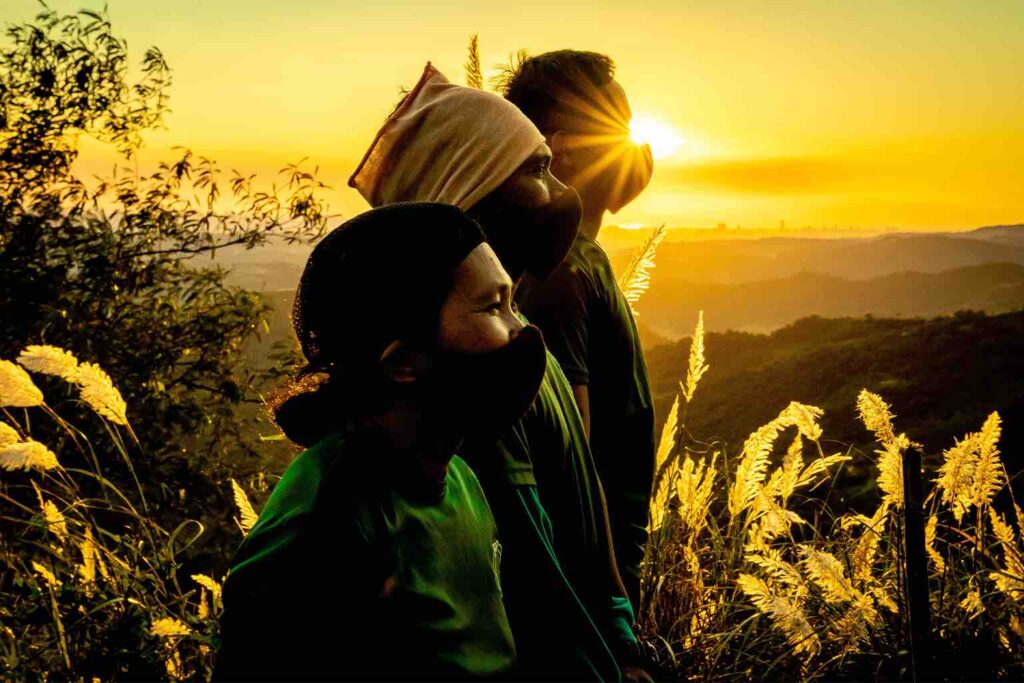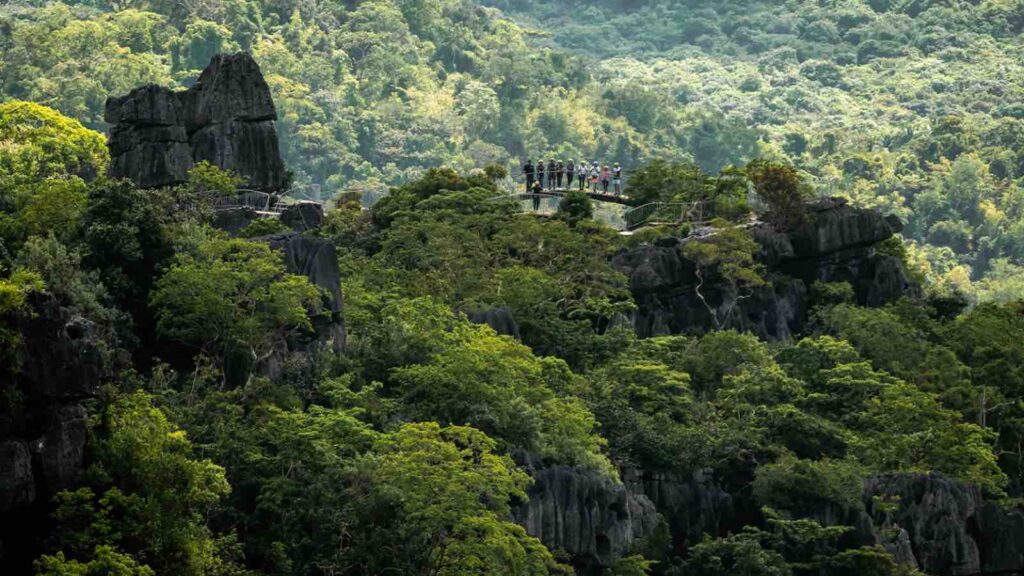Located just 30 miles from Manila, the Masungi Georeserve is a geological treasure trove within the Upper Marikina River Basin Protected Landscape; home to over 400 species of flora and fauna, many rare and threatened.
In a bittersweet triumph for environmental conservation, the Masungi Geopark Project (MGP) in the Philippines has secured the Biosphere Sustainability Award at the 2024 Asia Pacific Social Innovation Partnership Awards. The accolade, presented on May 4 in Nantou, Taiwan, recognizes the project’s innovative approach to sustainable geotourism and ecosystem protection.
RELEVANT SUSTAINABLE GOALS


Located just 30 miles from Manila, the Masungi Georeserve is a geological treasure trove within the Upper Marikina River Basin Protected Landscape. Home to over 400 species of flora and fauna, many rare and threatened, the reserve showcases prehistoric limestone formations and a unique karst ecosystem.
Despite its protected status and international acclaim, the Masungi Georeserve faces an array of challenges. Illegal logging, land-grabbing, and quarrying interests threaten the fragile ecosystem. More alarmingly, the reserve’s rangers have endured violent attacks in recent months, underscoring the high stakes of conservation efforts in the region.
The Dumaliang sisters Protecting The last green corridor of the Philippines
The Dumaliang sisters, Ann and Billie, spearhead the Masungi Geopark Project. Their vision intertwines conservation with sustainable tourism, aiming to create a model for environmental stewardship. “Tourism has the power to become a vehicle for conservation,” Billie Dumaliang stated in a recent interview, emphasizing their goal to engage visitors as long-term advocates for the reserve’s preservation.
However, the project’s future hangs in the balance. The Department of Environment and Natural Resources has announced plans to nullify the agreement that established the MGP, adding a layer of bureaucratic uncertainty to the existing environmental threats.
The Upper Marikina Watershed, which encompasses half of the MGP site, currently retains only 11-20% of its forest cover. This deforestation imperils water supplies and ecosystem services for nearly 40,000 residents, highlighting the broader implications of the reserve’s fate.

As the Masungi Geopark Project continues to garner international recognition, including honors from the United Nations and Global Changemaker Awards, its struggle against local challenges intensifies. The contrast between global acclaim and local threats encapsulates the complex dynamics of environmental conservation in developing nations.
The recent award serves not only as a recognition of past efforts but as a rallying cry for continued support. As the Masungi Georeserve Foundation navigates these turbulent waters, the global community watches closely, recognizing that the fate of this Philippine eco-tourism project may well foreshadow the future of conservation efforts worldwide.
Lead image courtesy of Masungi Georeserve. (Masungi’s Discovery Trail’s second-highest apex, Nanay (Filipino term for mother) has five interconnected limestone peaks).
You may also be interested in :
UNESCO Vows To Safeguard Bali’s Ancient Subak Irrigation System



